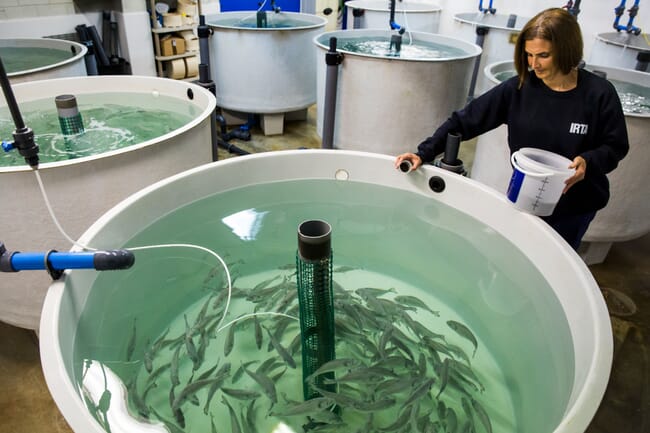A consistent metabolic ratio found across 133 Chinese marine and freshwater fish species provides new evidence in support of the idea that fish spawn for the first time due to respiratory stress, usually stemming from growth.

© IRTA
Using the maximum size, and mean size at first maturity in over 200 fish populations in 133 species of fishes, Chinese and Canadian researchers indirectly estimated the ratio of oxygen consumption of each species at these two sizes. They found that fish change from juveniles to adults when this ratio is about 1.40, in a study published in the Journal of Fish Biology.
“The consistency of this ratio across the species we looked at – and other species studied in the past or now being studied – supports the idea that reproduction is initiated by changes in the balance between oxygen supply and demand,” said Dr Daniel Pauly, senior author and principal investigator of UBC’s Sea Around Us initiative.
“Maturation and spawning appear to be induced when the supply of oxygen relative to the weight of individual fish declines. Thus, growing fish gradually become oxygen-limited, and there is a threshold, now identified, which tells them that it’s time to respond to external stimuli for maturation and spawning,” he said.
Dr Pauly’s Gill Oxygen Limitation Theory (GOLT) suggests that the oxygen supply of fish gradually declines as their weight increases because their gills – the organs which extract oxygen from water and supply it to their bodies – are surfaces that grow in two dimensions and cannot keep up with their bodies, which grow in three dimensions.
“There is a point when fish’s growth in weight leads to a decline in relative gill surface area, which leads to a critical level of oxygen supply. This triggers the hormonal cascade that pushes fish to respond to environmental stimuli to mature and spawn,” Dr Pauly said.
The GOLT challenges assertions that it is environmental stimuli at the onset of the spawning season alone which trigger the maturation and spawning process.
“Being able to corroborate with empirical evidence that respiratory stress is what prompts fish to reach first maturity when they do is a nice achievement,” said Dr Cui Liang, co-author and researcher at the Chinese Academy of Sciences. “This has important implications for aquaculture practitioners, who have long known the importance of dissolved oxygen in fish production.”
Drs Pauly and Liang said the constancy of the critical ratio substantiated in this study can also be used to understand why fish stressed by climate change-induced temperature increases and deoxygenation will tend to reproduce at smaller sizes if they survive and reproduce at all.
